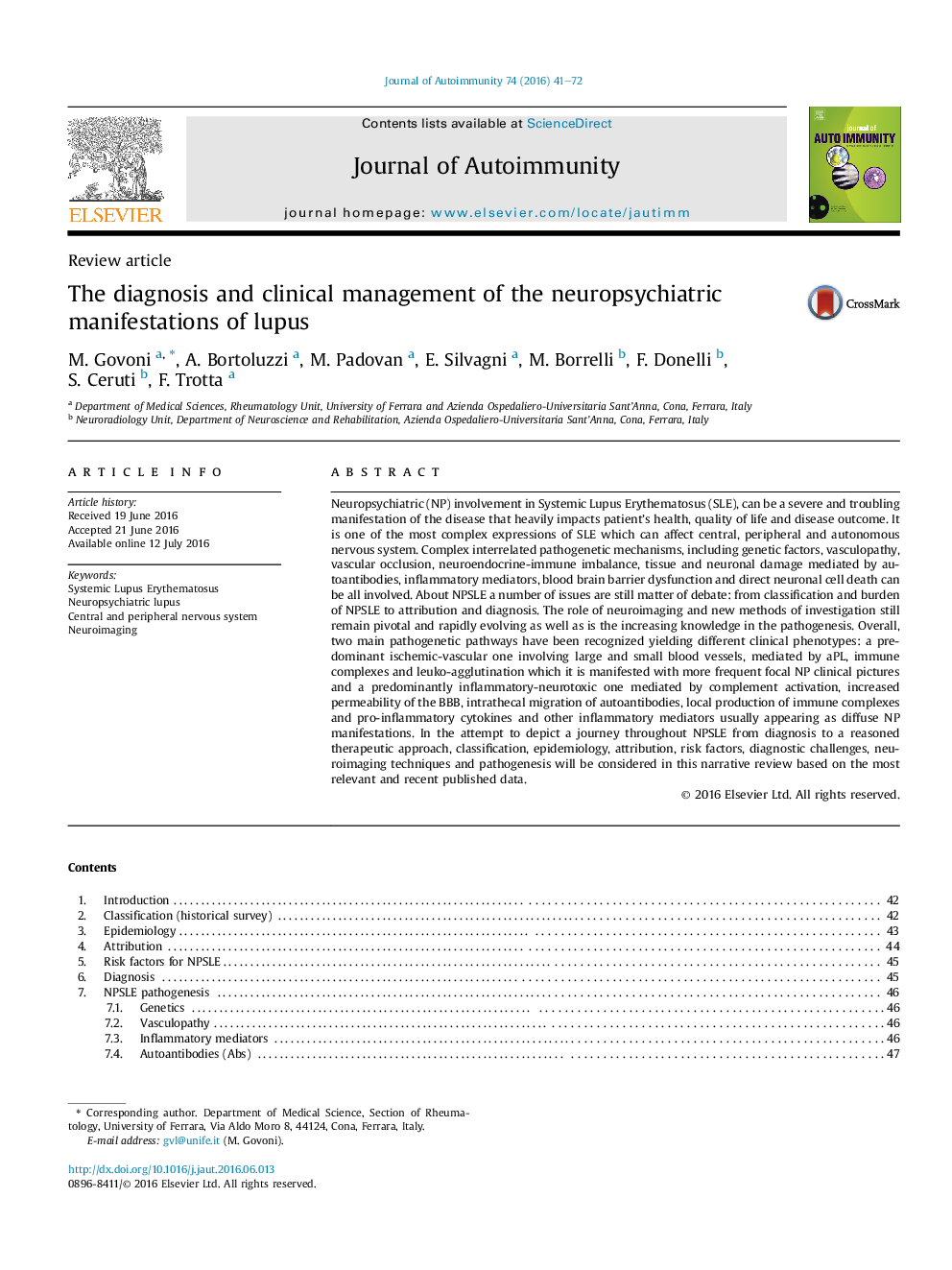| Article ID | Journal | Published Year | Pages | File Type |
|---|---|---|---|---|
| 5667897 | Journal of Autoimmunity | 2016 | 32 Pages |
â¢Neuropsychiatric (NP) lupus still remains one of the most challenging and complex manifestation of SLE.â¢Diagnosis relies on attribution of NP events and careful work up to check secondary causes of NP involvement.â¢Neuroimaging and its recent applications are of utmost importance for diagnosis and monitoring.â¢Two main pathogenetic pathways have been recognized: ischemic-thrombotic-vascular and inflammatory-neurotoxic.â¢Therapy should be based on the correct diagnosis and the identification of the presumed main pathogenetic mechanism.
Neuropsychiatric (NP) involvement in Systemic Lupus Erythematosus (SLE), can be a severe and troubling manifestation of the disease that heavily impacts patient's health, quality of life and disease outcome. It is one of the most complex expressions of SLE which can affect central, peripheral and autonomous nervous system. Complex interrelated pathogenetic mechanisms, including genetic factors, vasculopathy, vascular occlusion, neuroendocrine-immune imbalance, tissue and neuronal damage mediated by autoantibodies, inflammatory mediators, blood brain barrier dysfunction and direct neuronal cell death can be all involved. About NPSLE a number of issues are still matter of debate: from classification and burden of NPSLE to attribution and diagnosis. The role of neuroimaging and new methods of investigation still remain pivotal and rapidly evolving as well as is the increasing knowledge in the pathogenesis. Overall, two main pathogenetic pathways have been recognized yielding different clinical phenotypes: a predominant ischemic-vascular one involving large and small blood vessels, mediated by aPL, immune complexes and leuko-agglutination which it is manifested with more frequent focal NP clinical pictures and a predominantly inflammatory-neurotoxic one mediated by complement activation, increased permeability of the BBB, intrathecal migration of autoantibodies, local production of immune complexes and pro-inflammatory cytokines and other inflammatory mediators usually appearing as diffuse NP manifestations. In the attempt to depict a journey throughout NPSLE from diagnosis to a reasoned therapeutic approach, classification, epidemiology, attribution, risk factors, diagnostic challenges, neuroimaging techniques and pathogenesis will be considered in this narrative review based on the most relevant and recent published data.
